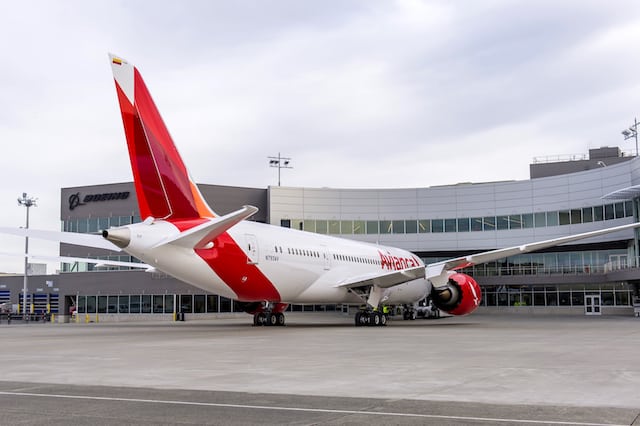
Boeing delivered its 500th 787 Dreamliner, pictured here, to Colombian carrier Avianca last year. Photo courtesy of Boeing
According to a new report published by Frost & Sullivan regarding the worldwide commercial avionics market forecasted to 2030, that total market was worth $12.74 billion in 2016 and is expected to reach $16.65 billion by 2030.
The study highlights industry challenges, growth drivers and restraints, and major avionics contracts. The report analyzed the impacts of emerging avionics markets like China, India and Russia, and also provides a list of home-grown suppliers. It also features market-share analysis of major players including Rockwell Collins, Cobham Plc, GE Aviation, Honeywell Aerospace, Garmin International, Thales Avionics, L-3 Communications, Esterline Technologies Corporation, Safran, SAAB Group, Aviation Industry Corporation of China (AVIC), Elbit Systems, BAE Systems and Meggitt PLC.
With 38,200 commercial and business aircraft expected to be delivered between 2017 and 2030, the line-fit market offers new growth opportunities for avionics suppliers, says Frost & Sullivan Aerospace Research Analyst Priyanka Chimakurthi.
Strategic imperatives for success and growth include:
- Continued product development through consistent investment in research and development (R&D), and active participation in joint R&D programs.
- The need for suppliers to diversify into business intelligence data platforms and analytics solutions in order to complement shipset sales and take advantage of Internet of Things opportunities;
- Large avionics suppliers require a strategic acquisition program to shortlist and evaluate targets due to intense industry consolidation.
- A focus on the development of value packages and innovative maintenance, repair and operations solutions, capturing both out-of-warranty and end-of-service platforms.
“Big aircraft integrators are following a low-risk strategy, investing in platform redevelopment programs — for example, A320 Neo, B737 Max and B777X — rather than clean sheet aircraft. This presents a huge barrier to entry for new players, as well as limits cross-platform expansion opportunities for incumbents,” noted Chimakurthi. “Furthermore, fluctuations in oil prices, regional conflicts and global economic uncertainty stemming from unexpected events like Brexit have an impact on both airline profitability and the avionics supply chain.”
Check out the full Frost & Sullivan analysis.